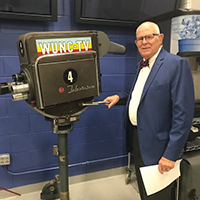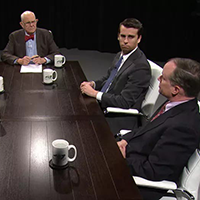A major federal policy shift is underway as the US Department of Education transfers administration of dozens of K-12 grant programs to the Department of Labor. According to a joint fact sheet from both agencies, the move is intended to “return authority over education to the States and local communities” while improving alignment between K-12 schools and the workforce pipeline.
For North Carolina, where lawmakers have steadily expanded parental choice over the last decade, and more parents taking advantage of educational innovation, the change presents an opportunity — IF it is done with an eye toward reducing federal government strings and influence.
WHAT THE FEDERAL PLAN ACTUALLY DOES
Under a new Interagency Agreement (IAA) using the Economy Act (31 U.S.C. §1535), the Department of Labor will take over the administrative side of many grants previously managed by the Department of Education. These include Title I grants for disadvantaged students, migrant education funding, literacy support, teacher quality grants, after-school programs, Rural and Low-Income Schools funding, and some federal dollars that flow to North Carolina’s charter schools.
The Department of Education will still hold statutory authority, but Labor will run the competitions, handle paperwork, and coordinate funding streams.
Federal officials say the administrative shift will “empower parents and States, promote innovation, and deliver process improvements.” The opportunities here are clear: This could fund students, not systems, something that the John Locke Foundation has advocated for years.
Therein lies the problem say critics, who are framing it as a restructuring that weakens the Education Department’s influence, a theme echoed in mainstream news.
To which supporters would say, “Yes, you’re welcome.”
WHY IT MATTERS FOR NORTH CAROLINA
This is language we understand here in North Carolina, where we already have education and workforce development programs that are more cohesively intertwined than most states. Our state’s community college system and College and Career Promise, CTE expansion, ApprenticeshipNC, and regional workforce boards are relatively tight with the K–12 system.
With DOL now administering federal grants, that coordination could strengthen our system further. Local administrators and families could gain the flexibility to craft innovating customized solutions for students and communities.
If the Department of Labor streamlines compliance requirements or reduces duplicative federal reporting along the way, districts and state agencies could see faster grant processing and fewer bureaucratic hoops. That would free local educators to spend more time on teaching and school improvement rather than federal paperwork.
Most importantly, the shift could give North Carolina more room to tailor federal dollars to state-defined goals rather than chasing every federal culture “fad of the day.” Think of it; Local Education Authorities (LEAs) could offer optional specialized programs in high school for coding and biotech in RTP, agriculture and energy in the east, tourism in the west, manufacturing labor pipelines in the Triad, all without the cumbersome requirements coming from Washington.
The change could decentralize educational edicts, returning authority to states and local communities. This would serve as an accelerator for North Carolina’s efforts over the last decade toward parental empowerment, state-level innovation, and more efficient use of taxpayer dollars.
This could create meaningful flexibility in designing literacy programs, expanding school choice, or building stronger career pathways right out of high school; innovation designed for our students in our communities.
WATCH FOR THE RED FLAGS
North Carolina should lean in to this direction but do so with a careful eye toward how the Department of Labor implements the new structure. Statutory requirements remain intact under the move, and federal grant conditions could simply migrate from one agency to another if not carefully monitored. DOL’s workforce metrics must not overshadow our own academic priorities or push states toward implementing a federal one-size-fits-all training mandate.
It could also bring with it strings that push DOL’s focus on workforce development metrics in the grant competitions, rather than some of the educational priorities that states prioritize like civics, arts, literature, and other academic foundations for a liberal arts education.
The change could bring new federal bureaucrats on the scene who create overly prescriptive policy, which would dampen state level flexibility and innovation. The ramp-up could be messy. Statutory authority and oversight still lies with the Department of Education, while the administration is with the DOL. Those first few grant cycles will likely be confusing with frustrating threads of communication. In the interest of efficiency, the feds could be tempted to take more control than necessary promising to ease the reigns later, and then never do so.
Most of all, watch for the messaging red flags. States will get the same level of grant money that they do today, it will just come from DOL. Critics could frame this as a “cut” in Title 1 money or reducing federal standards from the Department of Education.
This federal shift is not the end goal, but it is a step in the direction of moving educational authority to states. We must guard against potential federal overreach, but North Carolina could seize the moment to build a more locally driven, parent-centered, efficient, and results-oriented education system designed for today and the workforce to come.







